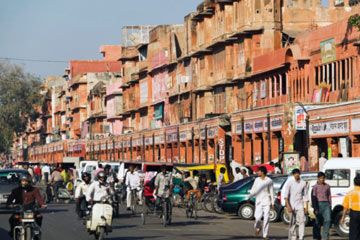Traditional French Art and Cinema
If you're looking for a French claim to cultural precedence, art would be a fine place to start. France is home to the earliest recorded cave drawings, dating from around 15,000 B.C. [source: Lascaux]. Depicting mostly animals (and a few stick-figure humans), the caves at Lascuax demonstrate that the French art tradition has some serious depth.
Before the Renaissance, gothic religious art dominated the French art tradition before the Renaissance (as it did in the rest of Europe at the time). The Chartres Cathedral is an existing example of the gothic tradition in France, marked by its height and ornamental buttresses.
Advertisement
The Baroque style emerged when art started to focus on less religious, more common- place scenes. This trend continued into the Rococo period, where fanciful images of the wealthy bourgeoisie began edging out space formerly held by stiff portraits of royalty.
It was in the 18th century that French art started to acquire a modern edge. French artists like Gustave Courbet used realism to depict the world around them. As the 19th century moved forward, impressionism took hold in French art.
The term impressionism was originally derogatory, as a critic implied that Claude Monet's work looked like an "impression" or sketch instead of a finished piece of art [source: Moffat]. But the art world caught up with Monet and his contemporaries, and impressionism went on to spur both abstract and cubist art.
While Picasso and friends created a Parisian following, Paris brothers Louis and Auguste Lumiere, showed the first public film screening. Soon, the French were putting out sprawling 330 minute Napoleon biopics (1927) and surrealist pieces like "The Seashell and the Clergyman" in 1928. (Spoiler: Not a romantic comedy.)
During the '50s and '60s, French cinema was drastically changed by the "New Wave" of directors like Francois Truffaut and Jean-Luc Godard. They relied on the auteur theory of cinema, where directors became the author and creative force behind their films. Directors used cinema verite styles (jump cuts, handheld cameras) to make stylistic choices.
While Hollywood dominates box office hits today, France has become the center of "artistic" film. The Cannes Film Festival honors this legacy every year and has become the most prestigious (and artistically esteemed) venue to debut films in the French art house tradition.
But enough of this artsy fartsy stuff. Let's sweat it out with some French sports next.


